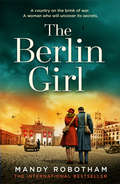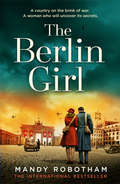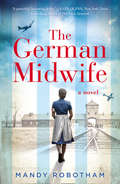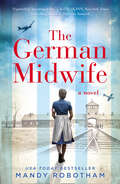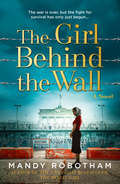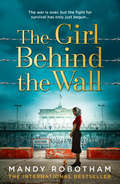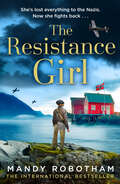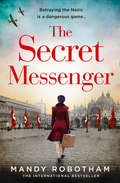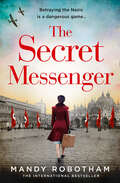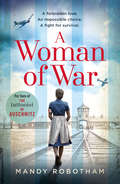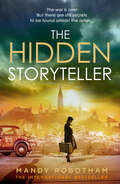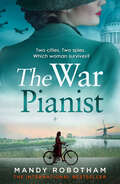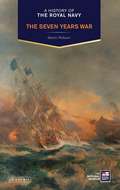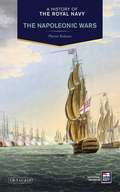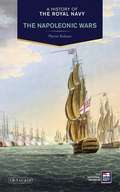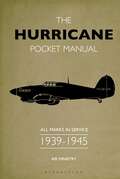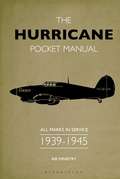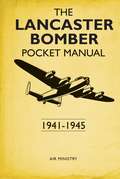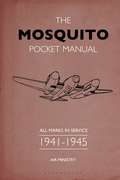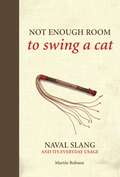- Table View
- List View
The Global Police State
by William I RobinsonAs the world becomes ever more unequal, people become ever more 'disposable'. Today, governments systematically exclude sections of their populations from society through heavy-handed policing. But it doesn't always go to plan. William I. Robinson exposes the nature and dynamics of this out-of-control system, arguing for the urgency of creating a movement capable of overthrowing it. The global police state uses a variety of ingenious methods of control, including mass incarceration, police violence, US-led wars, the persecution of immigrants and refugees, and the repression of environmental activists. Movements have emerged to combat the increasing militarization, surveillance and social cleansing; however many of them appeal to a moral sense of social justice rather than addressing its root - global capitalism. Using shocking data which reveals how far capitalism has become a system of repression, Robinson argues that the emerging megacities of the world are becoming the battlegrounds where the excluded and the oppressed face off against the global police state.
The Global Police State
by William I RobinsonAs the world becomes ever more unequal, people become ever more 'disposable'. Today, governments systematically exclude sections of their populations from society through heavy-handed policing. But it doesn't always go to plan. William I. Robinson exposes the nature and dynamics of this out-of-control system, arguing for the urgency of creating a movement capable of overthrowing it. The global police state uses a variety of ingenious methods of control, including mass incarceration, police violence, US-led wars, the persecution of immigrants and refugees, and the repression of environmental activists. Movements have emerged to combat the increasing militarization, surveillance and social cleansing; however many of them appeal to a moral sense of social justice rather than addressing its root - global capitalism. Using shocking data which reveals how far capitalism has become a system of repression, Robinson argues that the emerging megacities of the world are becoming the battlegrounds where the excluded and the oppressed face off against the global police state.
An empire of many cultures: Bahá’ís, Muslims, Jews and the British state, 1900–20 (Studies in Imperialism #212)
by Diane Robinson-DunnBased upon extensive archival research and bringing to life the words and actions of extraordinary individuals from the early 20th century, this book calls into question contemporary assumptions about the appreciation of diversity as a solely postcolonial phenomenon. It shows how Bahá’í, Muslim, and Jewish leaders prior to and during WWI found value in the existence of many different religions, races, languages, nations, and ethnicities within the British Empire. Recognition of this heterogeneity combined with sympathy for certain liberal traditions allowed those historical actors to engage with that imperial state and culture in ways that would have an impact on future generations and relevance to modern debates.
An empire of many cultures: Bahá’ís, Muslims, Jews and the British state, 1900–20 (Studies in Imperialism #212)
by Diane Robinson-DunnBased upon extensive archival research and bringing to life the words and actions of extraordinary individuals from the early 20th century, this book calls into question contemporary assumptions about the appreciation of diversity as a solely postcolonial phenomenon. It shows how Bahá’í, Muslim, and Jewish leaders prior to and during WWI found value in the existence of many different religions, races, languages, nations, and ethnicities within the British Empire. Recognition of this heterogeneity combined with sympathy for certain liberal traditions allowed those historical actors to engage with that imperial state and culture in ways that would have an impact on future generations and relevance to modern debates.
The Berlin Girl
by Mandy RobothamThe heart-wrenching new WWII story from the bestselling author of The German Midwife.
The Berlin Girl
by Mandy RobothamFrom the bestselling author of The German Midwife comes the heart-wrenching story of a country on the brink of war, a woman who puts herself in the line of fire, and a world about to be forever changed.
The German Midwife
by Mandy RobothamAn enthralling tale from the #1 Globe and Mail and USA Today Best Selling Author. “A powerful, haunting debut”—Kate Quinn, New York Times bestselling author of The Alice Network
The German Midwife
by Mandy RobothamThe USA Today Best Seller. An enthralling new tale of courage, betrayal and survival in the hardest of circumstances that readers of The Tattooist of Auschwitz, The Secret Orphan and My Name is Eva will love.
The Girl Behind the Wall
by Mandy RobothamFrom the internationally bestselling WWII novelist comes a story set at the dawn of the Cold War in Berlin.
The Girl Behind the Wall
by Mandy RobothamFrom the USA Today and internationally bestselling WWII novelist of The German Midwife, The Secret Messenger and The Berlin Girl comes a story set at the dawn of the Cold War in Berlin.
The Resistance Girl
by Mandy RobothamNorway, 1942: She has lost everything to the Nazis. But now she fights back…
The Secret Messenger
by Mandy RobothamThe highly awaited new novel from the internationally bestselling author of The German Midwife (also published as A Woman of War).
The Secret Messenger
by Mandy RobothamThe highly awaited new novel from the internationally bestselling author of The German Midwife (also published as A Woman of War). #1 GLOBE AND MAIL BESTSELLER.USA TODAY BESTSELLER.KINDLE TOP 10 BESTSELLER.
A Woman of War: A New Voice In Historical Fiction For 2018, For Fans Of The Tattooist Of Auschwitz
by Mandy RobothamMandy Robotham’s highly awaited next book, The Secret Messenger, is available for preorder now. For readers of The Tattooist of Auschwitz and Kate Furnivall comes a gritty tale of courage, betrayal and love in the most unlikely of places. Also published as The German Midwife.
The Hidden Storyteller
by null Mandy RobothamInternational bestselling author Mandy Robotham returns with a brand new tale set in war-torn Germany. The war is over. But there are still secrets to be found amidst the ashes . . . Hamburg, 1946 The war is over, and Germany is in ruins. Posted to an Allied-run Hamburg, reporter Georgie Young returns to the country she fled seven years prior – at the onset of the conflict – to find it unrecognisable. Amongst the stark horrors of a bombed-out city crumbling under the weight of millions of displaced souls, she discovers pockets of warmth: a violinist playing amidst the wreckage, couples dancing in the streets, and a nation trying to make amends. Joining forces with local detective Harri Schroder to catch a killer targeting women on the city’s streets, curiosity draws Georgie deep into the dark underbelly, and she soon discovers that some secrets of war did not die with Hitler… The next gripping and heart-wrenching historical fiction novel from international bestseller, Mandy Robotham. Readers love Mandy Robotham: ‘Evocative and emotive, a real must-read. Both harrowing and very moving. I couldn’t put it down’ Real Reader Review, ⭐⭐⭐⭐⭐ ‘I really liked the crime element in the story. This book will stay with me. Great writing – very poignant and heart-wrenching’ Real Reader Review, ⭐⭐⭐⭐⭐ ‘This is a really great book, full of interesting characters that you want to survive’ Real Reader Review, ⭐⭐⭐⭐⭐ ‘A thoroughly entertaining read. Strongly recommended’ Real Reader Review, ⭐⭐⭐⭐⭐ ‘Another excellent novel by Mandy Robotham! A thriller with a dash of historical fiction. It was very well written, and she had me on the edge of my seat the whole way through’ Real Reader Review, ⭐⭐⭐⭐⭐ ‘An informative, compassionate read of historical fiction. Highly recommended’ Real Reader Review, ⭐⭐⭐⭐⭐
The War Pianist
by null Mandy RobothamTwo cities. Two spies. Which woman survives? Pianist: NOUN. Informal. A person who operates or controls a radio transmitter – often in code. July, 1940Blitz-ridden London: Marnie Fern’s life is torn apart when her grandfather is killed in an air raid. But once she discovers that he’d been working undercover as a radio operative – or pianist – for the Dutch resistance, Marnie knows she must complete his mission – no matter the cost… Nazi-occupied Amsterdam: At the other end of the wireless, fellow pianist Corrie Bakker is caught in a dangerous game of cat-and-mouse as she desperately tries to keep her loved ones out of the line of fire – even if it means sacrificing herself… Bound together by the invisible wires of their radios, the two women lead parallel lives in their home cities, as both are betrayed by those they trust the most. But when the Nazis close in on one of them, only the other can save her… The next gripping and heartbreaking WWII historical fiction novel from international bestseller, Mandy Robotham. Real readers love The War Pianist: ‘A story packed with everything historical fiction readers need: espionage and betrayal to plights and flights…I learnt so much!…Brilliantly paced with twists and turns, courage and bravery and a touch of romance.’ Real Reader Review, ⭐⭐⭐⭐⭐ ‘Rich in detail and almost impossible to put down…I loved it.’ Real Reader Review, ⭐⭐⭐⭐⭐ ‘A front row seat to the survival of the Blitz in London as well as the Dutch resistance work. Fascinating…riveting.’ Real Reader Review, ⭐⭐⭐⭐⭐ ‘A book that captures your attention from the first page to the last. Mandy Robotham is a master storyteller…the tension mounts on every page and I could not put it down. Highly recommended.’ Real Reader Review, ⭐⭐⭐⭐⭐ ‘My favourite of Mandy’s books so far. I loved Marnie, Willem and Corrie and the relationship among the three of them. The strength and resolve of these characters is so inspiring and captivating…A perfectly composed novel for lovers of historical fiction…Every bit of this novel comes alive. Bravo!’ Real Reader Review, ⭐⭐⭐⭐⭐ ‘A gripping and heartbreaking WWII novel…If you love historical fiction, then this is a must-read.’ Real Reader Review, ⭐⭐⭐⭐⭐ ‘Mandy Robotham has done it again! A thoroughly well researched and interesting narrative set during WWII…Another five star read for me.’ Real Reader Review, ⭐⭐⭐⭐⭐
A History of the Royal Navy: The Seven Years War (A History of the Royal Navy)
by Martin RobsonThe Seven Years War (1756-1763) was the first global conflict and became the key factor in creating the British Empire. This book looks at Britain's maritime strategic, operational and tactical success (and failures), through a wide-ranging history of the Royal Navy's role in the war. By the end of the war in 1763 Britain was by no means a hegemonic power, but it was the only state capable of sustained global power projection on a global scale. Key to Britain's success was political and strategic direction from London, through the war planning of Pitt the Elder and the successful implementation of his policies by a stellar cast of naval and military leaders at an operational and tactical level. Martin Robson highlights the work of some of the key protagonists in the Royal Navy, such as Admiral Hawke whose appreciation of the wider strategic context at Quiberon Bay in 1759 decided the fate of North America. Robson ultimately shows that the creation, containment and expansion of the British Empire was made possible by the exercise of maritime power through the Royal Navy
A History of the Royal Navy: Napoleonic Wars (A\history Of The Royal Navy Ser.)
by Martin RobsonThe French Revolutionary and Napoleonic Wars were the first truly global conflicts. The Royal Navy was a key player in the wars and the key enabler of British success - at the cessation of hostilities Britain emerged as the only power capable of sustained global hegemony based on maritime and naval strength. The most iconic battles of any era were fought at sea - from the Battle of the Nile in 1798 to Nelson's momentous victory at Trafalgar in October 1805. This book looks at the history of the Royal Navy during the French Revolutionary and Napoleonic Wars from a broad perspective, examining the strategy, operations and tactics of British seapower. While it delves into the details of Royal Navy operations such as battle, blockade, commerce protection and exploration, it also covers a myriad of other aspects often overlooked in narrative histories including the importance of naval logistics, transport, relations with the army and manning. An assessment of key naval figures and combined eyewitness accounts situate the reader firmly in Nelson's navy. Through an exploration of the relationship between the Navy, trade and empire, Martin Robson highlights the contribution the Royal Navy made to Britain's rise to global hegemony through the nineteenth century Pax Britannica.
A History of the Royal Navy: Napoleonic Wars
by Martin RobsonThe French Revolutionary and Napoleonic Wars were the first truly global conflicts. The Royal Navy was a key player in the wider wars and, for Britain, the key factor in her eventual emergence as the only naval power capable of sustained global hegemony. The most iconic battles of any era were fought at sea during these years - from the Battle of the Nile in 1798 to Nelson's momentous victory at Trafalgar in October 1805. In this period, the Navy had reached a peak of efficiency and was unrivalled in manpower and technological strength. The eradication of scurvy in the 1790s had a significant impact on the health of sailors and, along with regular supplies of food and water, gave the British an advantage over their rivals in battle. As well as naval battles, the Navy also undertook amphibious operations, capturing many of France's Caribbean colonies and Dutch colonies in the East Indies and Ceylon; this Imperial dimension was integral to British strength and counteracting French success on continental Europe.This book looks at the history of the Royal Navy during the French Revolutionary and Napoleonic Wars, 1793-1815, from a broad perspective, examining the strategy, operations and tactics of British seapower. While it delves into the details of Royal Navy operations such as battle, blockade, commerce protection and exploration, it also covers a myriad of other aspects often overlooked in narrative histories such as the importance of naval logistics, transport, relations with the army and manning. An assessment of key naval figures and combined eyewitness accounts situate the reader firmly in Nelson's navy. Through an exploration of the relationship between the Navy, trade and empire, Martin Robson highlights the contribution Royal Navy made to Britain's rise to global hegemony through the nineteenth century Pax Britannica.
The Hurricane Pocket Manual: All marks in service 1939–45
by Martin RobsonThe Hawker Hurricane was a British single-seat fighter aircraft that was designed and predominantly built by Hawker Aircraft Ltd for the RAF. Although overshadowed by the Spitfire, during the Battle of Britain the Hurricane accounted for 60% of the RAF's air victories in the battle, and served in all the major theatres of the Second World War. The 1930s design evolved through several versions and adaptations, resulting in a series of aircraft that acted as interceptor-fighters, fighter-bombers (also called 'Hurribombers'), and ground support aircraft. Further versions known as the Sea Hurricane had modifications that enabled operation from ships. Some were converted as catapult-launched convoy escorts, known as 'Hurricats'. More than 14,583 Hurricanes were built by the end of 1944 (including at least 800 converted to Sea Hurricanes and some 1,400 built in Canada.The book collates a variety of pamphlets and manuals on the plane that were produced throughout the war for the benefit of pilots and others associated with the aircraft.
The Hurricane Pocket Manual: All marks in service 1939–45
by Martin RobsonThe Hawker Hurricane was a British single-seat fighter aircraft that was designed and predominantly built by Hawker Aircraft Ltd for the RAF. Although overshadowed by the Spitfire, during the Battle of Britain the Hurricane accounted for 60% of the RAF's air victories in the battle, and served in all the major theatres of the Second World War. The 1930s design evolved through several versions and adaptations, resulting in a series of aircraft that acted as interceptor-fighters, fighter-bombers (also called 'Hurribombers'), and ground support aircraft. Further versions known as the Sea Hurricane had modifications that enabled operation from ships. Some were converted as catapult-launched convoy escorts, known as 'Hurricats'. More than 14,583 Hurricanes were built by the end of 1944 (including at least 800 converted to Sea Hurricanes and some 1,400 built in Canada.The book collates a variety of pamphlets and manuals on the plane that were produced throughout the war for the benefit of pilots and others associated with the aircraft.
The Lancaster Bomber Pocket Manual: 1941-1945 (Military Manuals Ser.)
by Martin RobsonThe Avro Lancaster was the RAF's most famous and successful heavy bomber of the Second World War. Used predominantly at night, 'Lancs' dropped 608,612 tons of bombs in 156,000 sorties in the period 1942-1945. Some of these missions were incredibly daring – notably the 'dambusters' raid of 617 squadron on the Ruhr valley dams in May 1943. The success of such operations was testament both to the rugged, reliable qualities of this amazing aircraft and the bravery and skill of the pilots, navigators, bombardiers, flight engineers and gunners that crewed it. They relied on their training and experience, supplemented by various pamphlets and manuals that were produced throughout the war. Supplemented with illustrative plans and diagrams, this fascinating pocket manual provides a unique insight into the wartime operation of this famous aircraft.
The Mosquito Pocket Manual: All marks in service 1941–1945
by Martin RobsonThe de Havilland DH.98 Mosquito was a British multi-role combat aircraft with a two-man crew that served during and after the Second World War. It was one of few operational front-line aircraft of the era constructed almost entirely of wood and was nicknamed "The Wooden Wonder". The Mosquito was also known affectionately as the "Mossie" to its crews. Originally conceived as an unarmed fast bomber the Mosquito was adapted to a wide range of bombing roles. It was also used by BOAC as a fast transport to carry small high-value cargoes to, and from neutral countries through enemy controlled airspace.The book collates a variety of pamphlets and manuals on the plane that were produced throughout the war for the benefit of pilots and others associated with the aircraft.
The Mosquito Pocket Manual: All marks in service 1941–1945
by Martin RobsonThe de Havilland DH.98 Mosquito was a British multi-role combat aircraft with a two-man crew that served during and after the Second World War. It was one of few operational front-line aircraft of the era constructed almost entirely of wood and was nicknamed "The Wooden Wonder". The Mosquito was also known affectionately as the "Mossie" to its crews. Originally conceived as an unarmed fast bomber the Mosquito was adapted to a wide range of bombing roles. It was also used by BOAC as a fast transport to carry small high-value cargoes to, and from neutral countries through enemy controlled airspace.The book collates a variety of pamphlets and manuals on the plane that were produced throughout the war for the benefit of pilots and others associated with the aircraft.
Not Enough Room to Swing a Cat: Naval slang and its everyday usage
by Martin RobsonAs the crow flies'', ''chunder'', ''cold enough to freeze the balls off a brass monkey'', ''three sheets to the wind'' - many terms like these are used in everyday English language conversation and writing. But how many landlubbers know that they derive from naval slang or know what the phrase originally referred to? The navy has helped to shape modern society. The navy is famous for its traditions, quirks and nuances. It is disinctly different to wider society and nowhere is this more evident than in language. The naval community once had its own language, incomprehensible to anyone who was not a sailor, which described and explained his unique world. But on shore leave these men introduced their language to the populations of bustling ports and harbours and the usage slowly spread inland. Today through the mediums of film, television and music, naval slang has been brought to the wider public and has become fully integrated into the English language to point where many phrases are used by people who have no concept of their meaning. Presenting terminology thematically, this book provides a compilation of naval slang throughout the world, from terms relating to ship-handling and seamanship through to food and drink, discipline and insults. The text is further enhanced with original black line drawings that illustrate certain technical terms, such as ''splice the mainbrace''.


